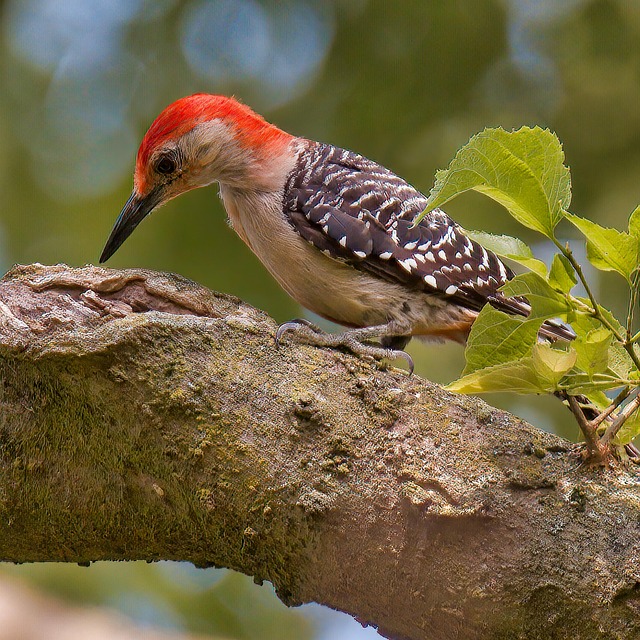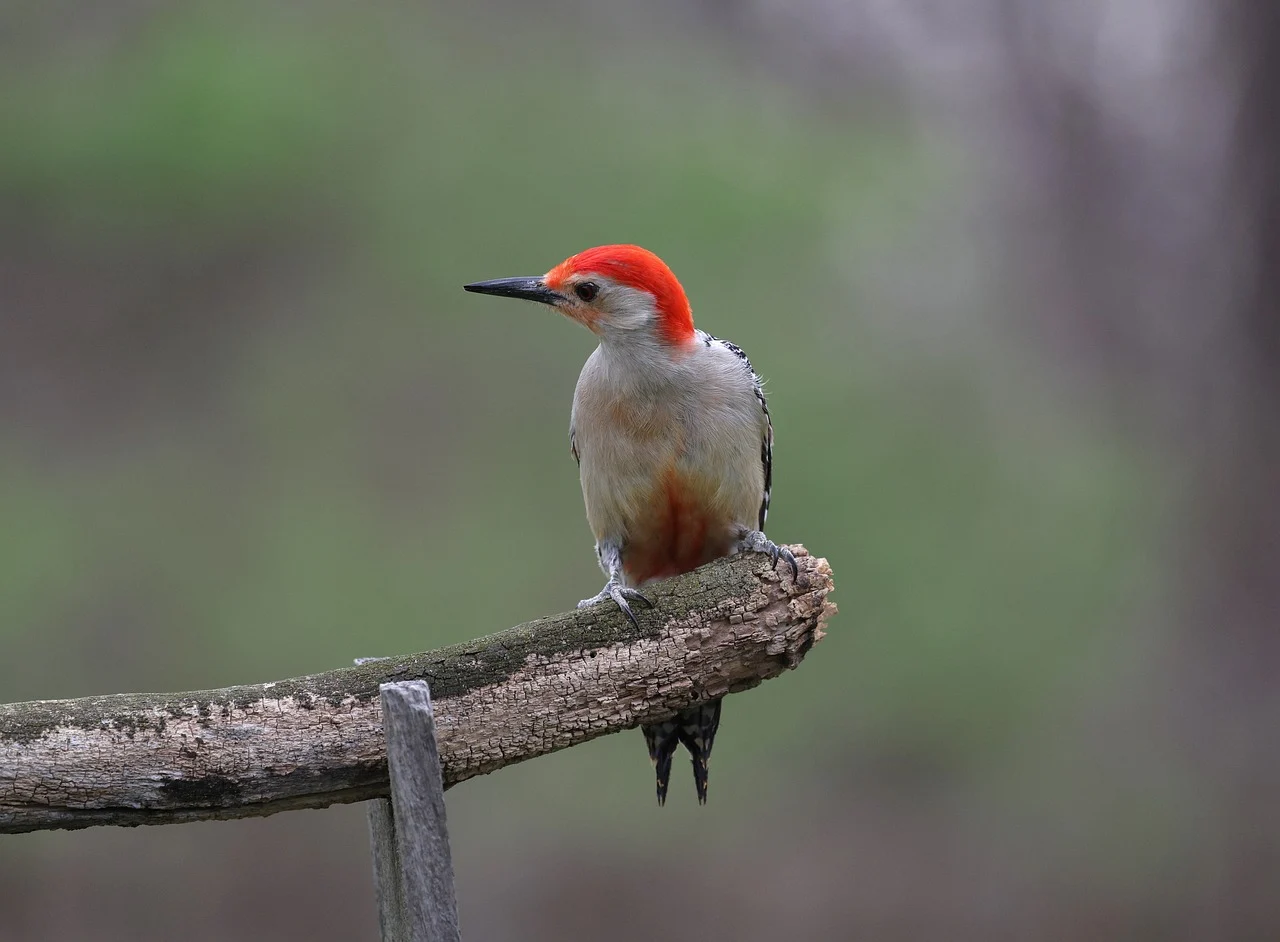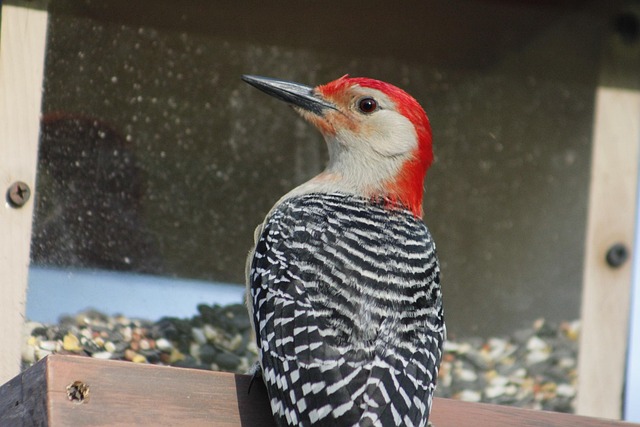If you have a bird feeder in the eastern United States, you almost certainly know this bird. It’s a medium-sized, noisy, and charismatic visitor, instantly recognizable by its striking “zebra-striped” back and the flash of red on its head.
This is the Red-bellied Woodpecker (Melanerpes carolinus).
But while it may be one of our most common backyard birds, it’s also one of the most misunderstood. From its confusing name to its wild anatomical features, this bird is full of surprises.
Here are 5 fascinating facts you probably didn’t know about the Red-bellied Woodpecker.

1. The “Red Belly” Is a Faint, Peachy Blush
Let’s get this out of the way first: the name is terrible. It’s the number one complaint of new birdwatchers. You spend 10 minutes looking for a bird with a bright, cherry-red chest, only to give up.
The Red-bellied Woodpecker does have a red belly, but it’s a very faint, peachy-red or pinkish-blush on its lower abdomen, often completely hidden by shadows and the bird’s posture. It’s a feature you’ll only see if the bird is hanging upside down in perfect light.
Why did 18th-century ornithologist Mark Catesby name it this? Because he’d already named the Red-headed Woodpecker, and the (much more obvious) red cap of this bird was, apparently, not good enough.
2. It’s NOT a Red-headed Woodpecker
This is the most common woodpecker mix-up in North America. Both birds are about the same size and both have red on their heads. But the difference is stark:
-
Red-headed Woodpecker: Has a full, solid, crimson-red “helmet” or “hood” that covers its entire head and neck. Its back is solid black with large white wing patches.
-
Red-bellied Woodpecker: Has a black-and-white “zebra-striped” back. The male has a red “mohawk” that runs from his bill, over his crown, and down to his neck. The female has a gray crown, with red only on her nape (the back of her neck).

3. Its Tongue Is a 2-Inch, Barbed Spear
This is the true “wow” fact. Like all woodpeckers, the Red-bellied Woodpecker has a tongue perfectly evolved for its job. It’s not just long; it’s shockingly long.
The tongue can extend nearly two inches past the end of its beak. It’s flat, sticky, and has a tiny, spear-like, barbed tip. This allows it to probe deep into bark crevices and stab or lap up insects.
Where does it store such a long tongue? It wraps! The tongue’s base and flexible, bony support (the hyoid apparatus) actually wraps up and around the back of the bird’s skull, cushioning its brain.
4. They Use “Anvils” to Eat
While they can easily pick small insects off a tree, what happens when they get a large, tough-to-crack nut, like an acorn or a pecan? They use a tool.
Red-bellied Woodpeckers are known to use “anvils.” They will find a deep, V-shaped crevice in a tree trunk or fence post and securely wedge the nut into the crack. With the nut held firmly in place, the bird can then hammer it open with its powerful beak. They will often have a favorite anvil that they use repeatedly.

5. They Aren’t Just Bug-Eaters; They’re Omnivores
We think of woodpeckers as bug specialists, and they are. But the Red-bellied Woodpecker has a surprisingly varied diet, which is why it’s so successful.
They are true omnivores and will happily eat:
-
Insects and spiders (their main course)
-
Nuts (acorns, pecans, hickory nuts)
-
Fruit (wild grapes, berries, and oranges—they’re famous for poking holes in oranges in Florida)
-
Seeds (they will eagerly visit a sunflower seed feeder)
-
Suet (a high-energy favorite at backyard feeders)
This flexible diet is why they are such a common and welcome guest at feeding stations all year round.
So, the next time you see a Red-bellied Woodpecker at your feeder, take a closer look. You’re not just looking at a “common bird”; you’re looking at a misnamed, zebra-backed, fruit-loving, anvil-using, long-tongued survivor.
Have you seen a Red-bellied Woodpecker at your feeder? Share your stories in the comments below!


